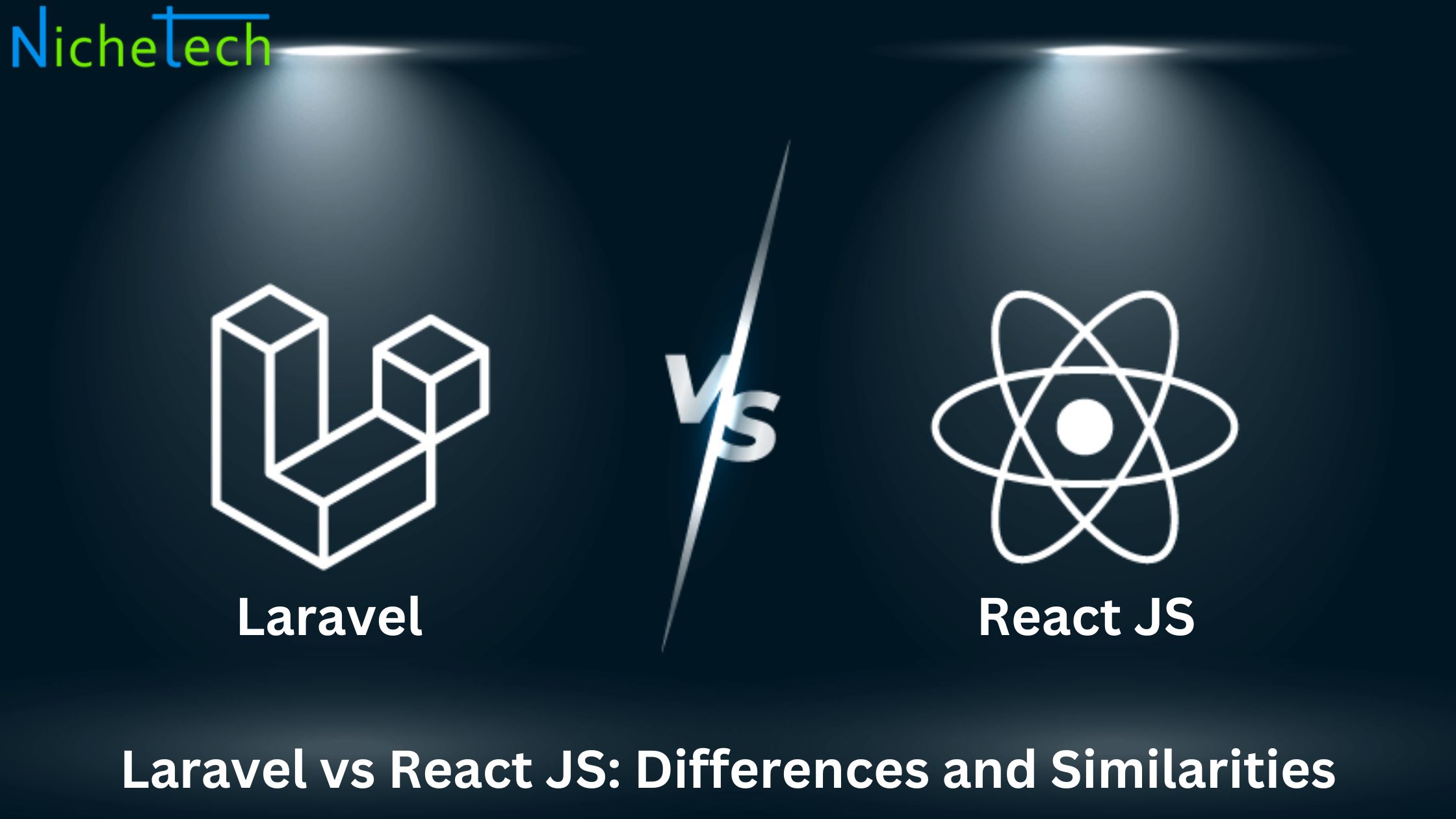In the ever-evolving world of web development, choosing the right technologies for your projects can significantly impact your workflow, performance, and scalability. Laravel and React JS are two popular tools in this landscape, but they serve distinct purposes. Laravel is a powerful PHP framework for server-side development, while React JS is a JavaScript library focused on building dynamic user interfaces. In this blog, we’ll dive into the differences and similarities between Laravel and React JS, helping you understand how each can be used effectively in modern web applications.
1. Overview Laravel:
Laravel is a comprehensive PHP framework designed for web application development. It follows the Model-View-Controller (MVC) architecture, providing a robust foundation for building scalable and maintainable applications. Laravel comes with built-in tools and features such as Eloquent ORM, Blade templating engine, and Laravel Forge for deployment, making it a versatile choice for backend development.
React JS:
React JS, developed by Facebook, is a front-end JavaScript library used for building user interfaces, particularly single-page applications (SPAs). It emphasizes a component-based architecture, allowing developers to create reusable UI components. React JS is known for its efficiency, thanks to its virtual DOM implementation, which enhances performance by minimizing direct manipulations of the real DOM.
2. Core Focus Laravel:
– Backend Development: Laravel primarily focuses on server-side development. It manages database interactions, user authentication, routing, and server-side logic.
– Full-Stack Framework: While Laravel is primarily used for backend tasks, it can be integrated with front-end technologies to create a complete application stack.
React JS:
– Frontend Development: React JS is dedicated to the client-side of web development. It handles the creation and management of user interfaces and interactions.
– Component-Based Architecture: React encourages building UIs with reusable components, making it easier to manage and scale large applications.
3. Architecture Laravel:
– MVC Pattern: Laravel follows the MVC architecture, separating the application into Models (data), Views (UI), and Controllers (logic). This structure helps in organizing code and managing the application’s complexity.
– Server-Side Rendering: Laravel handles server-side rendering, processing requests and generating HTML before sending it to the client.
React JS:
– Component-Based: React uses a component-based architecture, where each component represents a part of the user interface. Components can be nested and reused, promoting modular and maintainable code.
– Client-Side Rendering: React’s primary role is client-side rendering, where components are rendered in the browser, enhancing user experience with dynamic updates.
4. Performance
Laravel:
– Server-Side Performance: Laravel’s performance is tied to the server’s capabilities. It processes data on the server before delivering it to the client, which can lead to slower responses compared to client-side rendering.
– Optimizations: Laravel includes features like caching, query optimization, and efficient ORM to enhance performance.
React JS:
– Client-Side Performance: React’s virtual DOM allows for efficient updates and rendering, minimizing performance bottlenecks by reducing direct manipulations of the real DOM.
– Reactivity: React’s reactivity and state management features contribute to a smooth and interactive user experience.
5. Development Speed and Tools
Laravel:
– Built-In Tools: Laravel comes with a variety of built-in tools and features such as Laravel Mix for asset compilation, Artisan CLI for command-line tasks, and robust testing support.
– Learning Curve: Laravel’s learning curve can be steeper for those unfamiliar with PHP and MVC frameworks, but its comprehensive documentation and community support can ease the learning process.
React JS:
– Component Reusability: React’s component-based approach allows for rapid development and easy maintenance. Reusable components speed up the development process and reduce code duplication.
– Ecosystem: React’s ecosystem includes various tools and libraries like React Router for routing, Redux for state management, and Next.js for server-side rendering, enhancing development speed and flexibility.
6. Use Cases
Laravel:
– Backend Services: Laravel is ideal for building robust backend services, including APIs, content management systems (CMS), and complex web applications.
– Monolithic Applications: Laravel is well-suited for monolithic applications where the backend and frontend are tightly integrated.
React JS:
– Dynamic UIs: React excels in building dynamic and interactive user interfaces for single-page applications (SPAs) and complex front-end interfaces.
– Progressive Web Apps (PWAs): React’s capabilities make it a great choice for developing PWAs with offline capabilities and smooth performance.
7. Integration
Laravel and React JS:
– Full-Stack Development: Laravel and React can be used together to build full-stack applications. Laravel can handle the backend logic and API endpoints, while React can manage the frontend, providing a dynamic user experience.
– RESTful APIs: Laravel can expose RESTful APIs that React can consume, enabling a clear separation of concerns between the backend and frontend.
8. Community and Support
Laravel:
– Community: Laravel has a vibrant and active community, with extensive documentation, forums, and tutorials available. The Laravel ecosystem also includes various packages and extensions to enhance functionality.
React JS:
– Community: React JS benefits from a large and active community, supported by Facebook and numerous contributors. There is a wealth of resources, tutorials, and third-party libraries available for React developers.
In summary, Laravel and React JS serve different but complementary roles in web development. Laravel is a powerful PHP framework for backend development, offering robust tools and features for server-side logic and data management. React JS, on the other hand, is a versatile JavaScript library focused on building dynamic and responsive user interfaces on the client side.
By understanding their differences and similarities, you can leverage the strengths of both technologies to create modern, scalable, and high-performance web applications. Whether you’re building a complete full-stack application or focusing on a dynamic front-end, integrating Laravel with React JS can provide a seamless development experience and an exceptional user experience.







